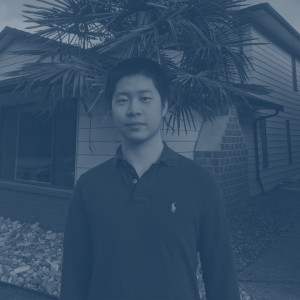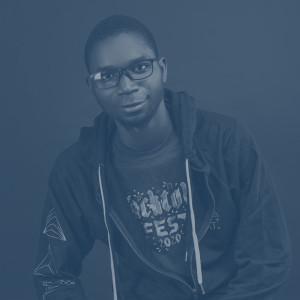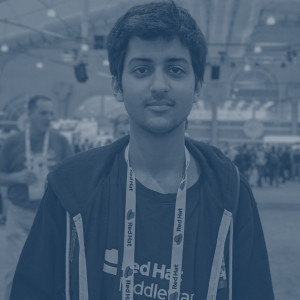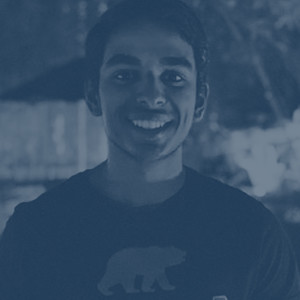Sam Poder, 16
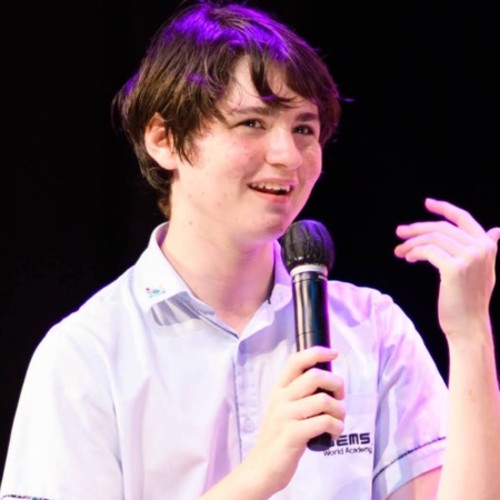
For most, the door into their career doesn’t present itself until later in life. But for Sam, it was in the fifth grade. Sam’s interest in programming was sparked by a makeathon held by his teacher, which then led him to participate in the building process with his school's coding class that same year. He learned HTML, CSS and JS alongside his classmates at school, in lessons that gave him the confidence to experiment at home, where he still tinkers away to this day.
Because he started programming so early, Sam had years to hone his skill. He eventually felt pent up with creative energy, hoping to find a widespread hacker community that he could share ideas with while learning from others. When browsing the internet he saw a screenshot of a Slack for a group called Hack Club, the perfect outlet to put his years of tinkering experience to use.
With the online Hack Club, a trove of opportunities opened up and he learned about similar communities such as MLH which led to him participating in events such as Local Hack Day, NotUniversity Hacks and Hack Club’s Slackathon. Bit by bit, with his constant exposure to hackathons, he met hundreds of fellow hackers while building fulfilling projects. His favorite project is ‘The Nerfanator.’ Like many hackathon experiences, the story goes further than just a project because his friends were beginners and he could introduce them to a community that he is passionate about. The project began with Sam and his friends meeting up one weekend to build an automated Nerf gun system that used machine learning to detect people going up a staircase. For them, this project was an opportunity to learn new skills and have fun with programming. Needless to say, Sam has come a long way from his fifth grade class.
Projects such as the Nerfanator are emblematic of what Sam loves about the path he’s chosen: the community. Through communities such as MLH & Hack Club, Sam gets the opportunity to meet other hackers of different cultures and systems of thinking, which he sees as a life-changing experience.
Not only does he credit his peers for widening his worldview, but for the personal growth he’s seen over the years. This growth goes beyond green GitHub graphs. He’s been pushed out of his comfort zone, resulting in knowledge of his new favorite framework, NextJS. His community taught him how to collaborate with others over code, how to be flexible and how to communicate with others—physically and virtually. He knows not to take these skills for granted, and can’t wait to implement what he’s been taught by his peers in a modern workplace.
With newfound problem solving and critical thinking skills in his wheelhouse, Sam has an understanding and appreciation for the nitty-gritty logistical work needed to power events such as hackathons. Part of this understanding comes from appreciation. Qualities of determination and resilience are not overlooked by Sam. This attention to detail among his projects and his peers is what helps make his work stand out. The way that Sam has been impacted by his peers drives him to make a difference among others.
During the summer of 2020, Sam put his organizational skills to use with the Summer of Making. The opportunity was presented to him by GitHub and Hack Club, who saw the invaluable work that he put into the community, to create the best summer program for high school hackers.
GitHub provided $50,000 for use in distributing hardware to hackers. With this, Sam and his team members were able to fund 300 unique hardware projects to makers in 143 different cities, from Lagos to Los Angeles. Seeing the impact that these grants made on both the recipients’ ability to create and make a change is what fulfilled Sam the most. Some highlights include the works of a hacker who used the grant to make a machine-learning algorithm to help people diagnose Kawasaki disease and another that used their grant to create a Humanitarian Activist Award-winning humanoid robot.
Throughout the summer, the Hack Club’s Slack saw an all-time high of activity. More and more students could connect and share projects while making the long-lasting projects that Sam himself values so much.
School presented more of a challenge after the technology program was uprooted by the departure of a teacher, but Sam chose to see it as an opportunity. Where some might throw their hands up and give up, he found a way to fill the gap—Innovation Week. The week-long celebration of making and hacking gave students the opportunity to try STEM outside of regular classroom learning. Participants, including himself, were shown the draw of a STEM major instead of the harmful stereotypes once associated with it.
Sam was able to undertake a new challenge by hosting his local region’s Local Hack Day: Share, something he had never done before. It was one thing to work with his school, but another thing entirely to host an all-virtual event. The stakes felt higher, but watching others participate in activities, sharing their projects, and engaging with the event that Sam had worked to build proved that high risks definitely yielded high rewards because yet again, he managed to bring community to others in the same group that supported him—a goal he intends to keep for the remainder of his career.
Quick Facts
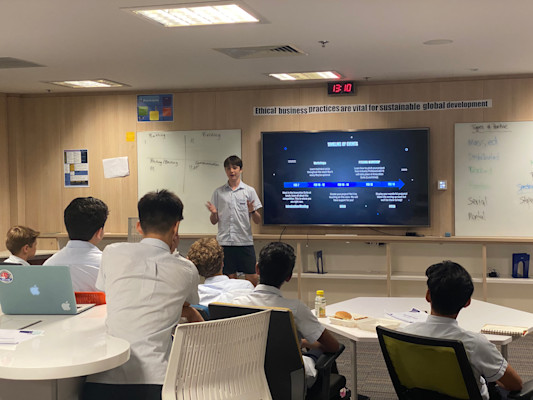
Sam Poder, 16

For most, the door into their career doesn’t present itself until later in life. But for Sam, it was in the fifth grade. Sam’s interest in programming was sparked by a makeathon held by his teacher, which then led him to participate in the building process with his school's coding class that same year. He learned HTML, CSS and JS alongside his classmates at school, in lessons that gave him the confidence to experiment at home, where he still tinkers away to this day.
Because he started programming so early, Sam had years to hone his skill. He eventually felt pent up with creative energy, hoping to find a widespread hacker community that he could share ideas with while learning from others. When browsing the internet he saw a screenshot of a Slack for a group called Hack Club, the perfect outlet to put his years of tinkering experience to use.
With the online Hack Club, a trove of opportunities opened up and he learned about similar communities such as MLH which led to him participating in events such as Local Hack Day, NotUniversity Hacks and Hack Club’s Slackathon. Bit by bit, with his constant exposure to hackathons, he met hundreds of fellow hackers while building fulfilling projects. His favorite project is ‘The Nerfanator.’ Like many hackathon experiences, the story goes further than just a project because his friends were beginners and he could introduce them to a community that he is passionate about. The project began with Sam and his friends meeting up one weekend to build an automated Nerf gun system that used machine learning to detect people going up a staircase. For them, this project was an opportunity to learn new skills and have fun with programming. Needless to say, Sam has come a long way from his fifth grade class.
Projects such as the Nerfanator are emblematic of what Sam loves about the path he’s chosen: the community. Through communities such as MLH & Hack Club, Sam gets the opportunity to meet other hackers of different cultures and systems of thinking, which he sees as a life-changing experience.
Not only does he credit his peers for widening his worldview, but for the personal growth he’s seen over the years. This growth goes beyond green GitHub graphs. He’s been pushed out of his comfort zone, resulting in knowledge of his new favorite framework, NextJS. His community taught him how to collaborate with others over code, how to be flexible and how to communicate with others—physically and virtually. He knows not to take these skills for granted, and can’t wait to implement what he’s been taught by his peers in a modern workplace.
With newfound problem solving and critical thinking skills in his wheelhouse, Sam has an understanding and appreciation for the nitty-gritty logistical work needed to power events such as hackathons. Part of this understanding comes from appreciation. Qualities of determination and resilience are not overlooked by Sam. This attention to detail among his projects and his peers is what helps make his work stand out. The way that Sam has been impacted by his peers drives him to make a difference among others.
During the summer of 2020, Sam put his organizational skills to use with the Summer of Making. The opportunity was presented to him by GitHub and Hack Club, who saw the invaluable work that he put into the community, to create the best summer program for high school hackers.
GitHub provided $50,000 for use in distributing hardware to hackers. With this, Sam and his team members were able to fund 300 unique hardware projects to makers in 143 different cities, from Lagos to Los Angeles. Seeing the impact that these grants made on both the recipients’ ability to create and make a change is what fulfilled Sam the most. Some highlights include the works of a hacker who used the grant to make a machine-learning algorithm to help people diagnose Kawasaki disease and another that used their grant to create a Humanitarian Activist Award-winning humanoid robot.
Throughout the summer, the Hack Club’s Slack saw an all-time high of activity. More and more students could connect and share projects while making the long-lasting projects that Sam himself values so much.
School presented more of a challenge after the technology program was uprooted by the departure of a teacher, but Sam chose to see it as an opportunity. Where some might throw their hands up and give up, he found a way to fill the gap—Innovation Week. The week-long celebration of making and hacking gave students the opportunity to try STEM outside of regular classroom learning. Participants, including himself, were shown the draw of a STEM major instead of the harmful stereotypes once associated with it.
Sam was able to undertake a new challenge by hosting his local region’s Local Hack Day: Share, something he had never done before. It was one thing to work with his school, but another thing entirely to host an all-virtual event. The stakes felt higher, but watching others participate in activities, sharing their projects, and engaging with the event that Sam had worked to build proved that high risks definitely yielded high rewards because yet again, he managed to bring community to others in the same group that supported him—a goal he intends to keep for the remainder of his career.
Quick Facts

